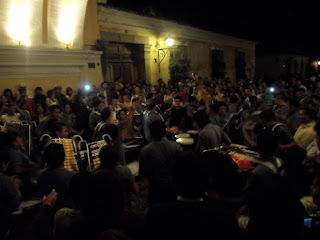 |
| Our luggage is on the roof. Seriously. |
 |
| The brown stuff is beans. We think. |
 |
| Sunset over the lake |
 |
| The food market at Chichi |
 |
| Don't run with scissors. Or flaming torches. |
 |
| Street party for independence day |
 |
| Roasting marshmallows in a volcano |
 |
| Our luggage is on the roof. Seriously. |
 |
| The brown stuff is beans. We think. |
 |
| Sunset over the lake |
 |
| The food market at Chichi |
 |
| Don't run with scissors. Or flaming torches. |
 |
| Street party for independence day |
 |
| Roasting marshmallows in a volcano |
No comments:
Post a Comment